
In a new series of blogs for 2024, we’re going back to basics. This is a guide for budding ecologists who are keen to get started in the industry, or anyone interested in learning a little more about professional ecology practices in the UK.
To start the year, we’re looking at the ecology and conservation of the enigmatic badger.
About Badgers
The European Badger (Meles meles) is a widespread species throughout Europe and Western Asia. They are a large, nocturnal mammal with distinctive black and white striped heads that are visible from birth.
They can be found in a range of habitats, though prefer areas with suitable soil for digging, access to food sources, a mix of vegetative cover and open space, and relatively undisturbed environments to establish their territories.
Badgers are omnivorous, consuming a diverse range of food, including insects, small mammals, cereals, fruits, and roots. Their foraging activities impact soil structure, plant growth, and small mammal populations, influencing the broader ecosystem.
Badgers are very sociable, and live within familial underground setts. They often have many setts within their territory - main, annexe, subsidiary and outliers, and move between these throughout the year. Clans will mark their territory boundaries with noticeable latrines, or dung pits.
Badger cubs are born between January and March. They emerge from the sett when they are approximately 8 weeks old and are weaned at around 3 months.
Badger Conservation
Conservation efforts for badgers have been imperative due to historical persecution, leading to legislation aimed at protecting the animals and their setts.
The Protection of Badgers Act (1992) stands as a pivotal measure, introduced mainly as a method of curtailing their persecution and uphold animal welfare. The Wildlife and Countryside Act (1981) and the Hunting Act (2004) provide additional protection for the species.
Illegal hunting and the brutal practice of badger baiting continue to endanger these animals. Even activities such as fox hunting, with its practice of blocking sett entrances, inadvertently impact badgers. Additionally, the ongoing debate around the spread of bovine tuberculosis has not helped their reputation among farmers.
Moreover, the ever-growing network of roads poses a significant hazard, leading to accidents and disrupting their habitats. Intensive agricultural practices further encroach upon their territories, diminishing food sources and space to create their setts.
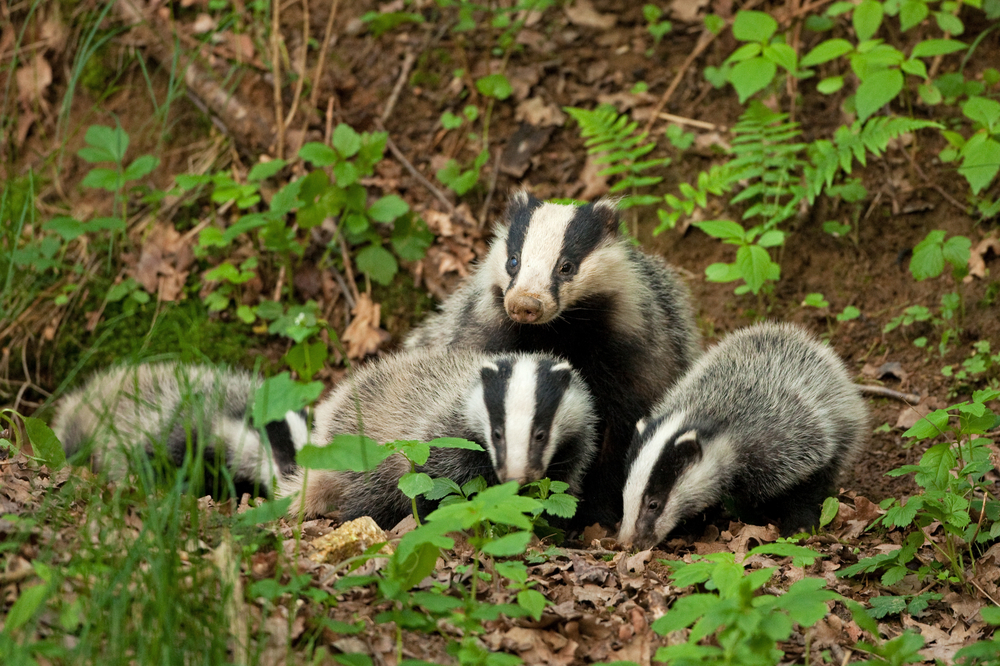
Survey Methods
Employing a diverse array of survey methods enables ecologists to better understand badger populations, their behaviours, and their habitats. By combining traditional observations with newer technology, conservation and mitigation efforts can be more accurately targeted and effective in ensuring protection of badgers on a potential development site.
Visual Signs
Most preliminary site surveys start with a Phase 1 - a walkthrough of the area where any sightings or signs of protected species and habitats can be noted for further surveying.
As these will be carried out by an ecologist during the day, the main indicator for badger presence is their setts. Entrances to setts are characteristically D-shaped, and there are often many of them together. Spotting these setts and noting visual signs such as bedding outside the entrances, trails, and scratch marks helps identify their presence and activity.
Badger footprints are distinctively broad, so can be easily distinguished from other carnivores such as foxes and large dogs. They have 5 toes with long claw marks, and a wide rear pad. The FSC Guide to British Mammal Tracks & Signs is a great key, that is easy to carry along in a pack.
You might also spot coarse, grey hair caught on wire fencing or along trails under scrub.
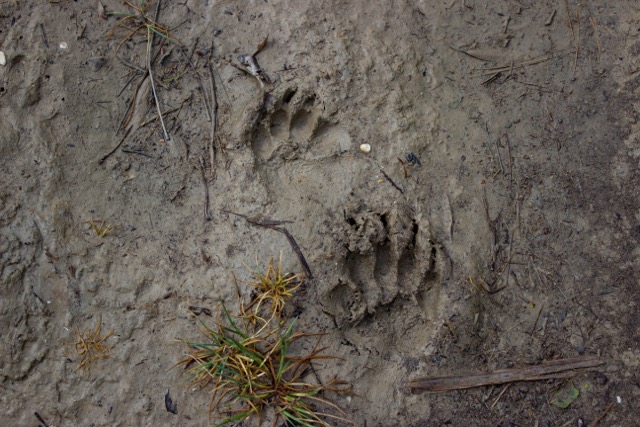
Latrine Surveys
A unique method involves using coloured plastic beads mixed with enticing peanuts and molasses, creating a distinct marker for each badger sett. By encouraging badgers to consume these marked beads, researchers can map territories and the sett type based on the colours found in the latrines, providing valuable information about territorial boundaries and ranges for large-scale projects.
This method of survey can be used at all times of year is most effective in early spring when badgers are most territorial.
Wildcare offer all the ingredients you need to carry out latrine surveys, and a wide range of pellet colours.
Camera Trapping
Employing technology, remote cameras are strategically placed outside sett entrances and along trails to capture images and footage of badgers. These cameras offer a non-intrusive way to monitor badger activity, providing valuable insights into their behaviour and current activity patterns. To ensure the safety and effectiveness, cameras can be equipped with locks and security cases while deployed.
This method can also be carried out at any time of year, but is most effective when vegetation has died back over Autumn and Winter as it gives cameras a clearer sight.
As camera trapping is non-intrusive it can be carried out by those with an interest in ecology too, and isn’t exclusively used for badger surveys. Take a look at our Top Tips for Trail Cameras blog post and our range of cameras.
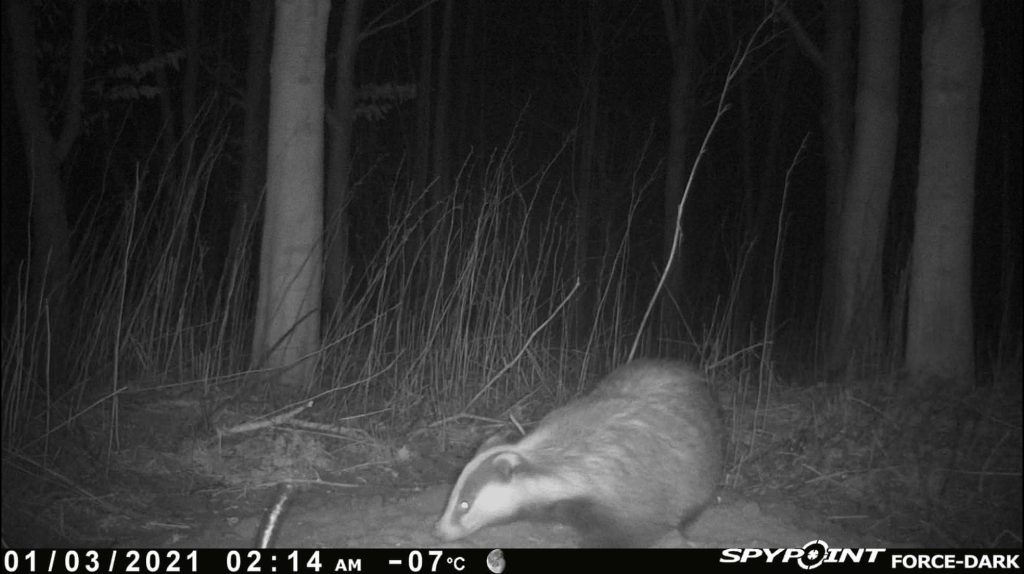
Mitigation Methods
In the UK, mitigating the impact of development on badgers involves a range of strategies aimed at preserving their habitats and minimising disruption to their lives.
Preservation of Setts
One of the primary and preferred mitigation methods where possible involves the preservation of badger setts within development areas. Special considerations and planning are put in place to avoid disturbing or destroying these underground dwellings. Sometimes, modifications to construction plans are made to work around these setts.
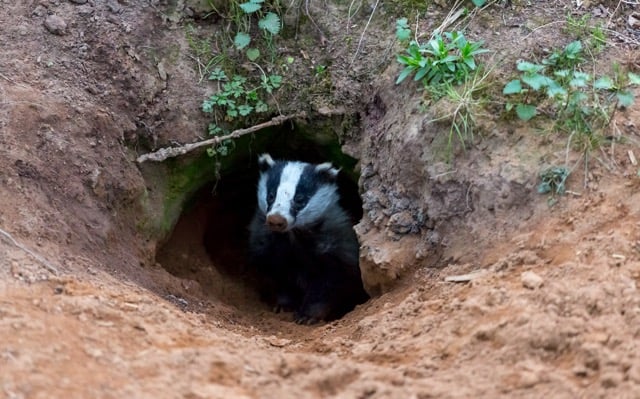
Less Intensive Farming
Implementing less intensive farming methods can significantly reduce the impact on badgers. Practices that prioritise biodiversity and habitat preservation help maintain suitable environments for badgers, ensuring they have ample food sources and secure spaces to thrive.
Exclusion and Artificial Setts
In scenarios where construction or development unavoidably disturbs badger setts, alternative methods must be employed. Artificial setts are constructed in suitable areas away from the development site and badgers are encouraged to relocate voluntarily.. These artificial burrows are designed to mimic natural setts and are gradually introduced to the badgers. Eventually, the original sett is closed off using gates and chain link, prompting the badgers to permanently relocate to the new artificial sett. Suitable food and bedding material can be used to help encourage the badgers to the new site.
As this is a major disturbance to the badgers, it must only be carried out under a licence approved by Natural England, Nature Scot or Natural Resources Wales. For the purposes of development, licences only valid between July and November to ensure the activity does not disturb their breeding cycle and cubs.
Wildcare offer a range of badger fencing and exclusion equipment, which you can browse here.
Translocation
Where there are no suitable sett sites in the immediate area, capture and translocation programs are used. Badgers are humanely captured using traps and then relocated to a suitable alternative area where an artificial sett has been constructed. This method aims to ensure the safety and well-being of the badgers while allowing the development to proceed.
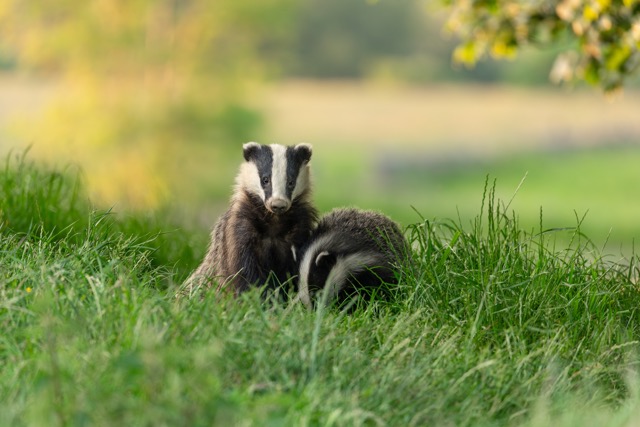
Further Reading
To further your knowledge of badger ecology and conservation, we recommend the publications below:


